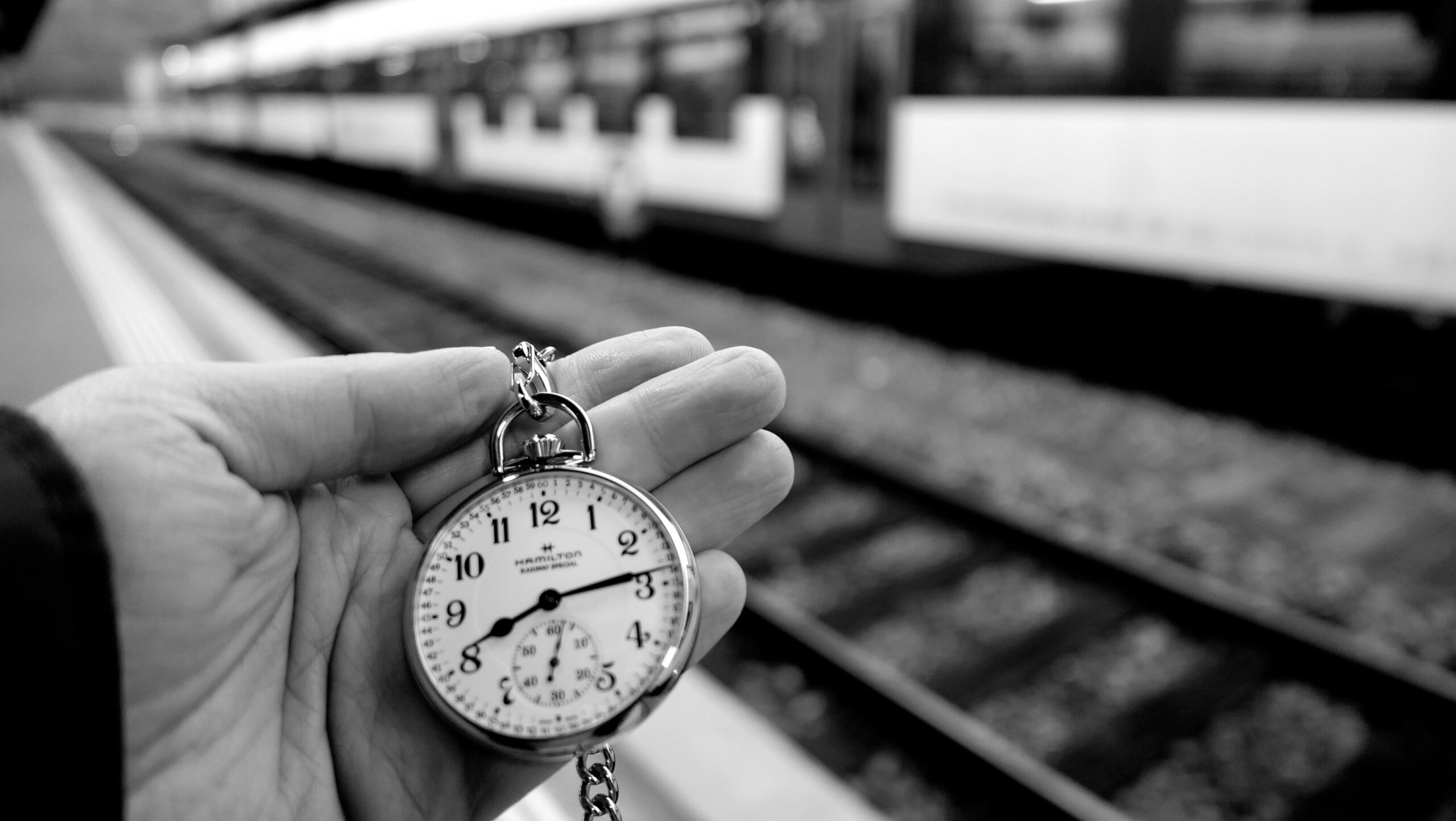
This post was originally published when the blog was focused on Bienne, under the name Made in Bienne. The concept has since evolved to also cover the watch scene across the rest of Switzerland.
I usually don’t write watch reviews on this blog for a number of reasons. The main one is that Made in Bienne is first and foremost about what’s “behind the watch”: the people, the places, the history. Today though, I’m making an exception. As somewhat of a tribute to Hodinkee’s acclaimed A Week on the Wrist series, I’ll tell you what it’s been like spending a week with the Hamilton Railroad Pocket Watch in the pocket. Needless to say, as always, this is a fully independent blog post, with no official or commercial ties to the brand.
Why this exception? Well, first, precisely because the watch is an exception in and of itself. How many affordable, mechanical pocket watches are released these days? There are some of course, but not many, especially from Bienne brands. Second, this is one I find particularly appealing, for reasons I’ll explain below. Also, it was launched to celebrate Hamilton’s recent 130th anniversary, which I recently wrote about. Finally, the watch was gifted to me by family, so it has sentimental value and, well, I have it in my possession for the review!
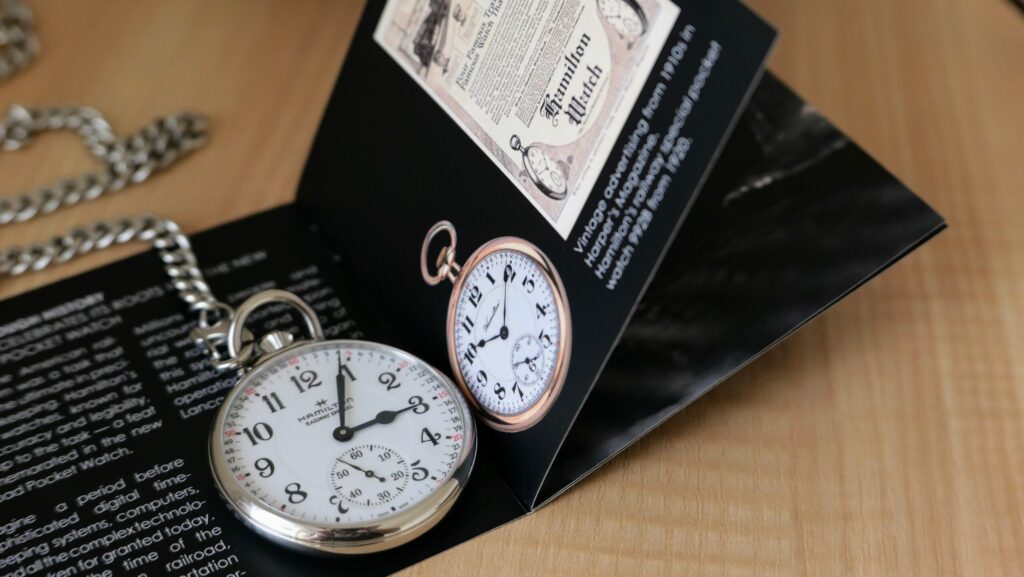
The Hamilton Railroad Pocket Watch
Let’s start with a quick overview of the watch itself. It takes us back to the early days of railroad development, in the very early 20th century. Accurate timekeeping was critical not only for planning purposes but also to prevent accidents. A standard was developed around railroad pocket watch requirements, and several companies such as Waltham and Elgin started producing them. Hamilton shortly followed.
Hamilton watches rapidly grew a reputation for their quality and reliability. The brand also marketed its products in a very efficient manner, running campaigns in early railroad magazines. Its timepieces, in particular reference 992, quickly became the watch of choice for railroad professionals and users. It is believed that approximately 600,000 units of the model were produced between 1902 and 1940.
This contemporary version is a tribute to what made the brand’s early success. It was produced in 917 units, recalling Hamilton’s original address in Lancaster, Pennsylvania: 917 Columbia Avenue.
The case is 50 mm wide, with a white dial, black lacquered hands, a fully graduated outer minute track and a small seconds counter. The movement inside is a hand-wound ETA 6497, with 50 hours of power reserve. The watch has a sapphire crystal and 5 bar of water resistance. On the caseback, you’ll find an commemorative engraving, and the limited edition individual number.
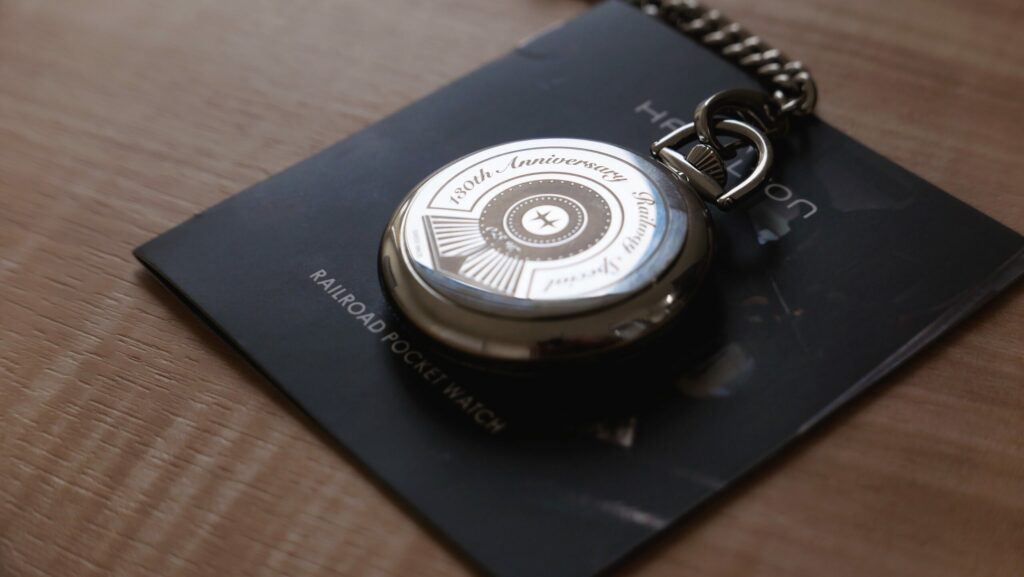
Why I wanted to own it
Having recently written about Hamilton’s 130th anniversary, I had definitely set myself in the mood for such a watch. Beyond that, I really like the watch itself, its design, its history, and the construction quality. But as someone who does not like to own many objects, what really created the incentive here was something different. It was about how this pocket watch can actually be used in 2023.
Like many watch fans, I find pocket watches often beautiful and appealing. But, in today’s world, they are also highly impractical. Even if one accepts the idea of checking the time only “on demand”, and making the effort of pulling out a watch to do so, there are other obstacles. Most pocket watches around are vintage. That means they’re often fragile, and usually not super precise. Their charm can be infinite, but that does not make them fit for daily use.
Some brands still produce pocket watches, but they are often “museum grade”, hosting highly sophisticated complications, housed in precious materials. Those, by definition, are also not meant for everyday use. And certainly not for everyday budget!
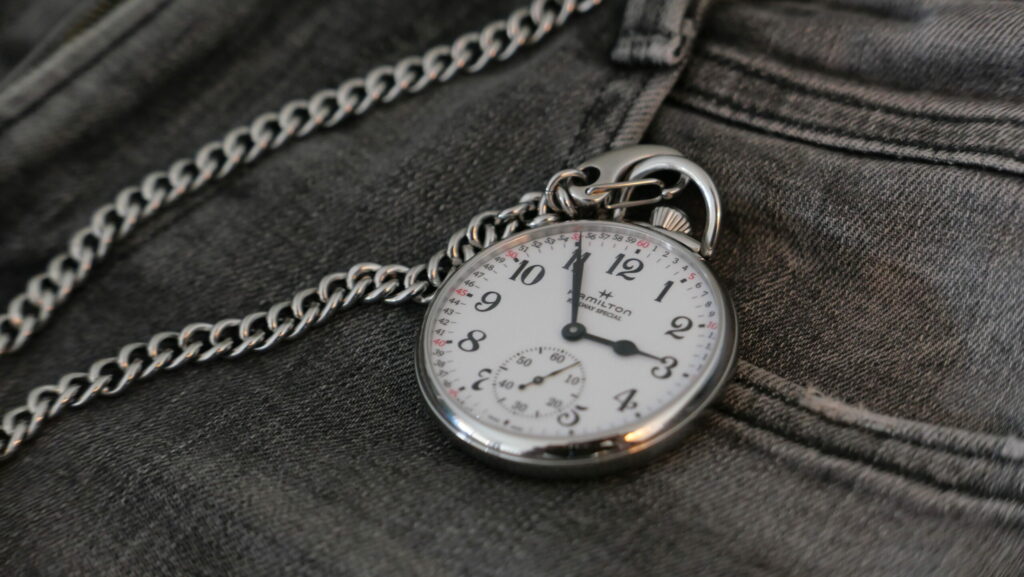
The Railroad Pocket Watch, with its contemporary movement, its sapphire crystal and 5 bar water resistance is actually fit for the task of an everyday watch. It can be worn casually, without particular fear of damaging it. It actually feels better protected that a wristwatch, either in the pocket or the hand, especially with its chain. And yet, despite its modern characteristics, its design, appearance and hand wound movement have preserved, in my view, the old day charm.
What I like most about the design is how it’s classical but not outdated. A bit like a good pair of jeans. Speaking of jeans, I personally think it’s the best attire for this watch. Not just because of the fifth pocket, which was invented precisely for pocket watches, but the overall casual, American style. Some pocket watches will look best with a three-piece suit. Not this one. Being a very casual dresser myself, it all works out well.
The piece looks from a different era but not excessively so. It almost has a certain boldness. Mind you, back then, pocket watches were not meant to be fancy by definition. They were the standard form factor for a man’s watch. Some were very very delicate, while others were focused on practicality. This one feels like a toolwatch from a century ago.

What it comes with
I usually don’t care about what a watch comes with. If anything, I wish some brands would make boxes tiny or store them for you. But here, it actually makes a major difference to how the watch fits into a 21st century lifestyle.
First, there’s the chain. It is really good quality, easy to clip to trousers and, on the other end, to the watch itself. There’s a little Hamilton logo on the very well executed clip. Then, there’s a leather pouch. While it looks the part, it is, for my personal use, a bit too “old school”. Of course, so is the watch but, as I explained above, I think it fits well with a certain contemporary attire. The pouch somewhat tips over that balance, in my subjective opinion. I have used it though while travelling, to protect the watch it inside my bag.
Then, there’s the great kit that comes for when the watch is not being worn. Given that, even for fans like me, the watch will probably not be the daily driver, it’s really nice to have ways of displaying it when not in the pocket. Hamilton included a little holder, meaning you can use the watch as a lovely desk clock. It also comes with a museum-like sign, with history about the piece, and a little booklet. I personally adore this combination, and it has meant that the watch is part of my daily routine, even when I don’t wear it for a while.
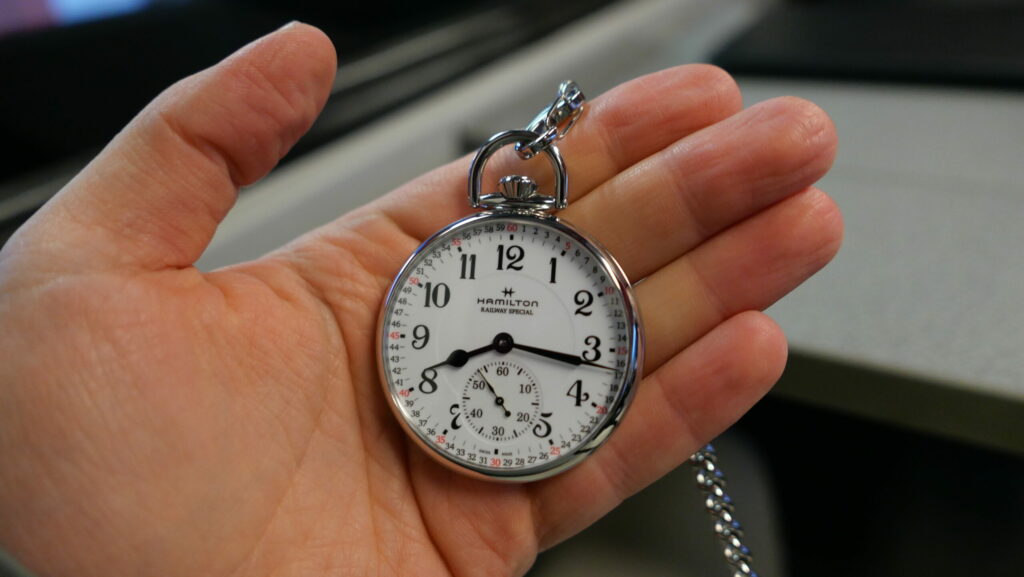
Using the watch
As mentioned earlier, the watch is a manual wind. That is not only true to its origins but also standard for most pocket watches, given that there is no wrist movement giving the necessary impulse for a rotor to wind the movement. Some people may see manual winding as a nuisance but many others, like me, really enjoy winding their watch. It’s a moment of calm, almost meditative, connecting with the watch, and forgetting about the rest. Because of its size, the crown here has a great grip, making the experience particularly enjoyable.
Perhaps my favourite thing about this watch is holding it in my hand. It’s just has a very satisfying presence. Rounded, smooth, and a good size. And for someone clumsy like me, knowing there is that safety chain means I’m not there worrying about dropping it. More importantly perhaps, reading the time is easy and relaxing, because of the great legibility of the dial contrasting with the substantial black hands.
Most of the time, the watch will be in the pocket. While there are different places to put it, such as a vest or the leather pouch provided in the set, for me, it’s always going to be that fifth pocket on my jeans. The only issue I had was that some of my jeans have a metallic label on that pocket, so I was afraid to scratch the case. I may have put scotch tape over it and then forgot to remove it before putting in the laundry, but please don’t tell my wife!

Telling time with this pocket watch is a much more interesting experience than I expected. Sure, unless you’re in the middle of getting your arm tattooed, it’s generally not as convenient as a wrist watch. But the great thing is, when you want to know the time, it becomes a very intentional moment. Not just a glimpse, a downward, oblique peek. Here, it’s almost a ceremony. You stop, you put your hand in your pocket, you grab the watch, and, when you look at it, it’s as if time stopped. By that, I’m not suggesting you forgot to wind it. Rather, it’s just a moment, where all your attention is on what you’re doing: telling time. Nothing else really matters. And, even when wearing jeans, it just feels like a very elegant thing to do.
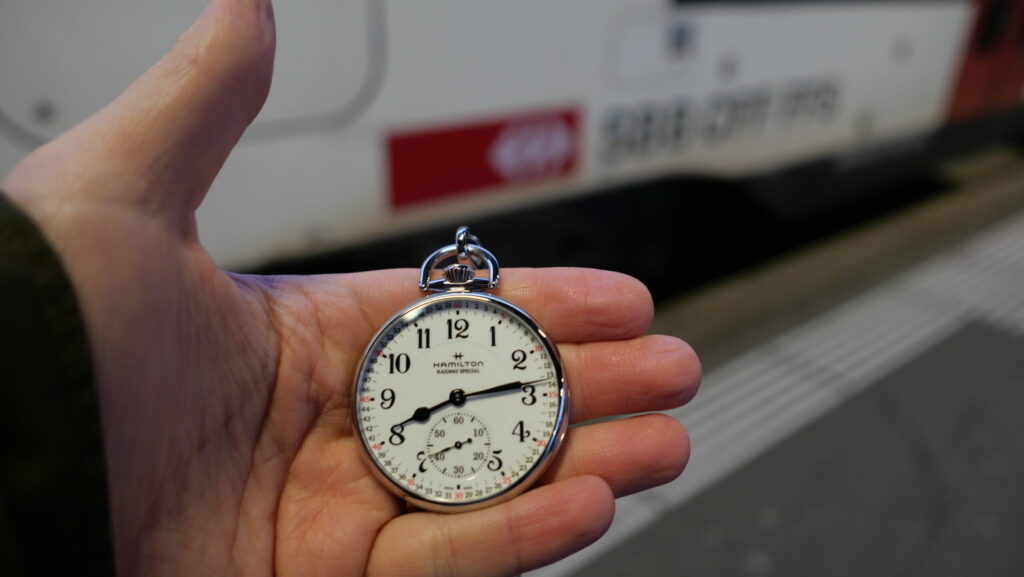
One unexpectedly convenient use of the watch turned out to be as an ad hoc desk clock. I’m not talking here about hanging it on the holder, but rather laying it flat, on the go, in a meeting or in a café, alongside a laptop or notebook. Not only does it immediately make the whole setting look a bit more chic, it helps keep track of time without needing to stare at a watch every few minutes. Everyone around the table is somewhat a bit more relaxed as a result.
Finally, one way I occasionally used my Hamilton Railroad Special over the week was as a second timezone device. I had a regular watch on my wrist, and had set the pocket watch to the timezone 9 hours away I needed to keep track of for a work project. Sure, it was mostly an excuse to be able to wear both, but this whole hobby is mostly excuse anyway, isn’t it?


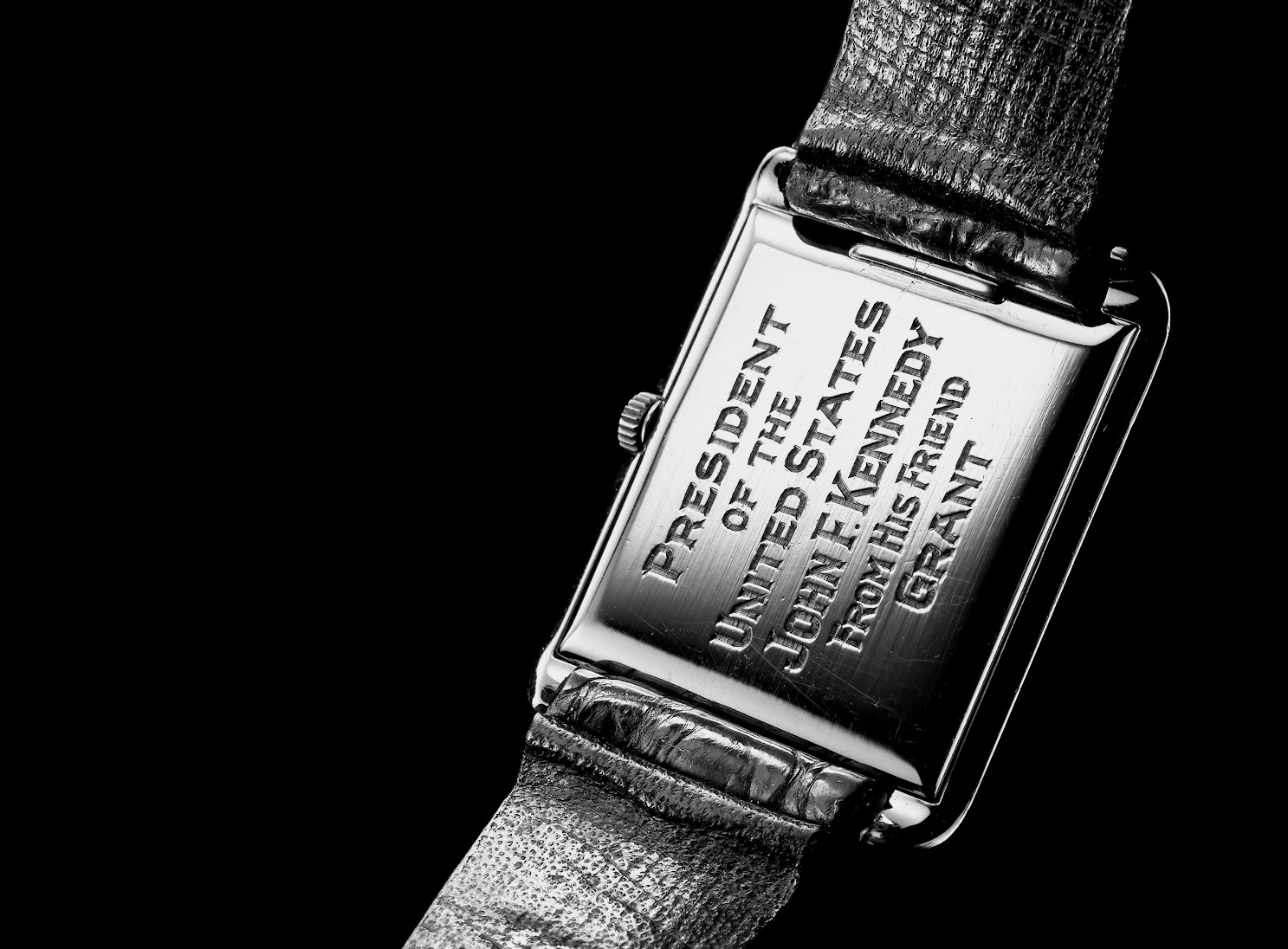

Very interesting. I can imagine how much you love this pocket watch. Yes it’s a very good time keeper and I think it’s very cool old fashioned style to check the time instead of a phone. Thank you so much!